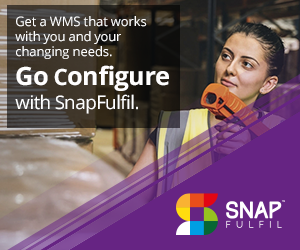Saving, time money and resource - as well as the planet
Technologically advanced, cloud-based SnapFulfil WMS can be remotely implemented anywhere in the world in just a matter of weeks, for immediate results and ROI - plus carbon footprint savings for both us and our clients.
Our agility and speed-to-value has been critical to clients, new and old, switching up to e-commerce and direct to consumer (DTC) and experiencing rapid growth. But during the pandemic, our remote implementation model cut down drastically on air and car miles, plus hotel nights and the number of personnel involved.
And as the global demand for greener ways of working grows, there’s no going back.
For an average of 10 new US clients being digitally onboarded, I would say in 2021 we saved around 240,000 air miles and 9,000 car miles, plus around 500 hotel nights. In addition, regarding 10 existing clients, the enhancement work was done remotely so you can double the savings figures.
Looking at the many comparison calculators online, 18,000 miles by car roughly equates to 12 tonnes of CO2, while 480,000 miles by air is roughly equivalent to 160 tonnes of CO2. Plus, there are average CO2 figures per day for hotels, so for 1000 hotel nights it's 28 tonnes.
This means the US team saved some 200 tonnes of CO2 emissions last year, just by operating remotely. Putting it into context, other calculators say that for the capture of 1 tonne of CO2 emissions, 50 trees must grow for one year – so figuratively speaking we’ve contributed to about 10,000 lovely new trees somewhere in the States!

Being a digitally-driven business generally contributes towards a more sustainable model of working, because using a WMS with hand held RF devices eliminates paper-based processes and all the associated spreadsheets and labels, while also creating an automatic audit trail.
What’s more, a functionally superior WMS means customers can utilise up to 30% less space to store the same number of products, as well as optimisation of all materials handling. These both reduce energy consumption and therefore carbon emissions.
Pallet loading is optimised too, which cuts down on the amount of plastic wrapping needed, while the real-time WMS data generated can also be regularly analysed to improve process efficiencies and further identify cost cutting and energy saving opportunities.
Quite simply, our sophisticated digital implementation and augmentation models ensure that SnapFulfil and its customers can continue to operate in an eco conscious fashion moving forward.
An increasing number of our clients are also embarking on their own ‘green’ journey and we’re pleased to see our industry responding to the challenges ahead. SnapFulfil is here to support those businesses as they evolve towards a more sustainable model of working.



